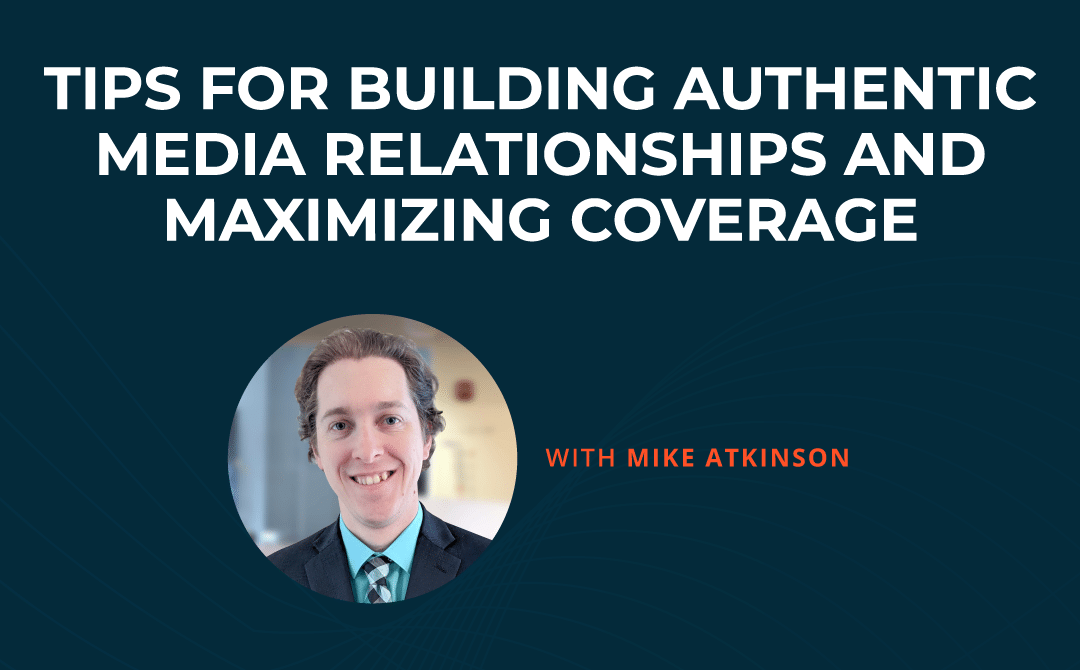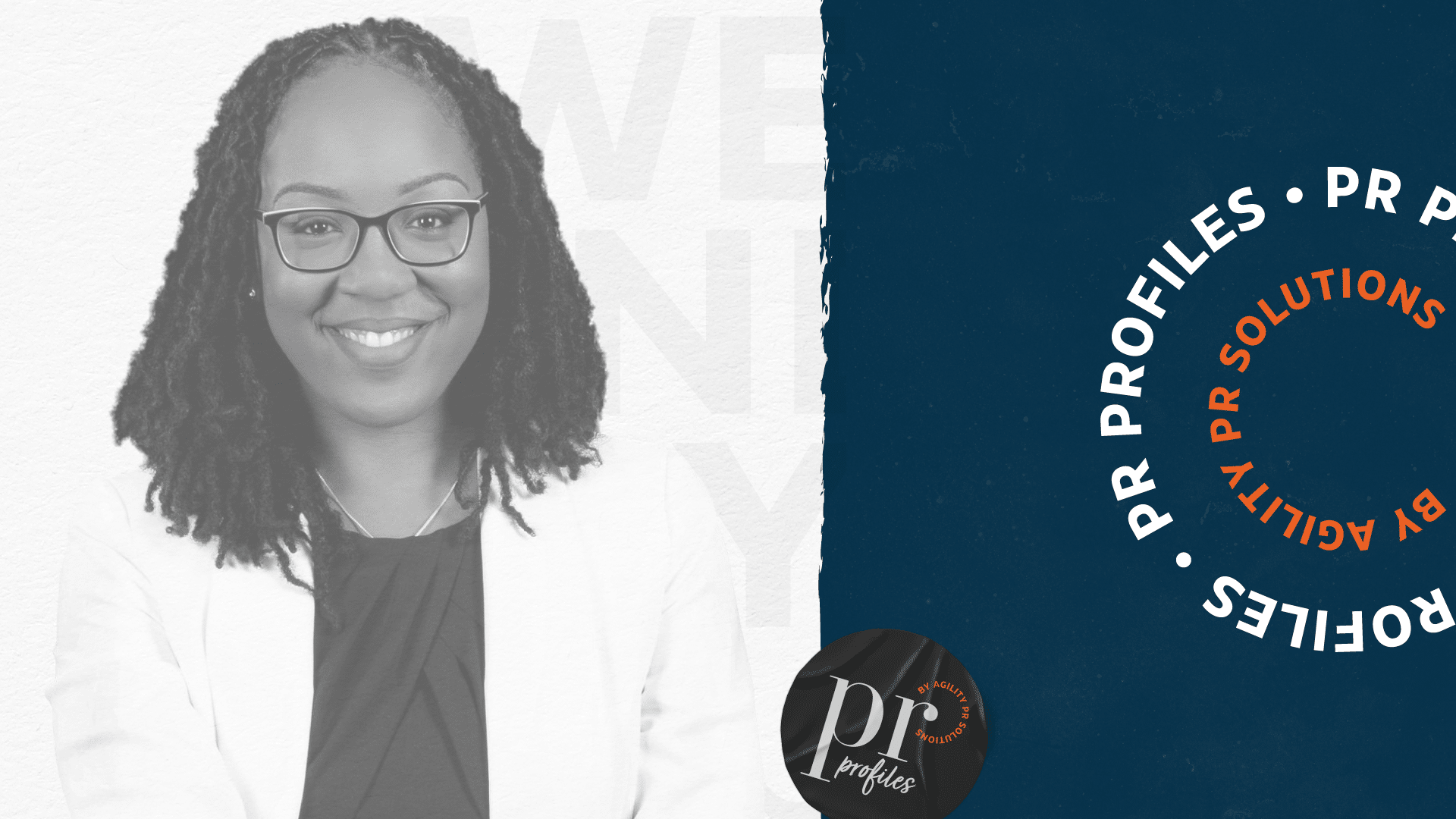In this month’s free webinar, Mike Atkinson, an account director at Sage Communications, walked attendees through tips for building long-term, mutually beneficial media relationships that will help PR pros stand out from the crowd and earn more coverage.
Why media relations matters
Practicing good media relations increases your name recognition with reporters, making them more likely to respond to you in the future. “Building relationships with reporters matters because it sets you apart from the many other comms professionals who are doing the same and many who are looking for a shortcut,” says Mike in his presentation. “If you’re not using any creative strategies to stand out, you can get lost very easily, especially if they don’t know who you are or what you’re pitching, and they’re not watching for a message from you.”
The second reason Mike gives for why media relations matters is upholding your personal reputation. “There’s no such thing as one bad relationship, and that’s because beats, publications, and staffing are constantly changing,” says Mike. “You may have a relationship with a reporter at Politico who leaves and goes to The Hill, and now suddenly, if you have a great relationship with that reporter and they go talk to these new reporters over at The Hill, you can make you even more contacts. On the flip side, if you have a bad reputation, they can go over there and start explaining how they blacklisted you and working with you was a pain.”
The difference between media relations and pitching
“Media relations goes far beyond pitching,” says Mike. “Media relations is something that you should be doing every day. As a communications professional, you should be building relationships with people in the media. And that doesn’t mean just reaching out when you want something.”
The tips Mike shared in his presentation are not designed to get you an immediate piece of coverage, but to build long-term relationships that will follow you throughout your career, making your pitching efforts easier.
Tip 1: Find a mutual interest
Mike says to find a mutual interest and “don’t be afraid to mention it when you’re speaking to them.” Some examples of a mutual interest could be attending the same university, being a fan of the same sports team, or sharing a hobby. Expressing this mutual interest, “can be as simple as something like adding a PS to your pitch or using it as a sign off,” says Mike.
Tip 2: Arranging coffee meetings or virtual check-ins
“It’s essentially reaching out, finding a reporter who spans your coverage, areas of your SMEs, or who is somebody that you’re going to cross paths with a lot and just send a note,” says Mike. “Introduce yourself. Let them know that you’re interested in connecting.”
Once you’ve arranged a coffee meeting or virtual check-in, what happens then? Before your meeting, Mike says to: “Read their articles. Understand their beat. Look at the types of sources they use. Look at the types of things they talk about and how they write their articles. Gather backgrounds on your SMEs, your clients, and your spokespeople. Scan their social platforms.”
Mike reminds attendees that the coffee meeting is not about pitching your clients or spokesperson. “It’s not the time to hard sell your clients or your SMEs.”
Afterwards, you should always follow up by sending a thank you note, at which time Mike says you can mention your clients or SMEs if they were relevant to your earlier conversation.
Tip 3: Reach out about the journalist’s articles
“I would say this is the number one way of getting in front of reporters when you don’t have anything to pitch,” says Mike. When you find an article that’s meaningful to you, send an authentic note of gratitude to the journalist about their work. However, Mike warns that if you’re not authentic in your intentions, journalists will know. “Make sure that if you are doing it, read the article. Provide real examples. Don’t read the first three lines and then call that out.”
Mike says this tip works because, “You’re making contact and you’re opening the door for future conversation. You’re not trying to get an immediate gain out of this.”
Tip 4: Personalize your pitches
All the tips up until now have been about not pitching. But there are times when sending a pitch as your first point of contact is appropriate—breaking news, a brand announcement that can’t wait. However, you must still do it right. “When you do have to reach out cold, it’s important to take the time to tailor your pitches for those people that you can’t get in front of,” says Mike. “You do need to tailor your pitches for each target, especially for journalists at higher tier publications who are combing through dozens and hundreds of pitches a day.”
For Mike’s tips on personalizing your pitches and writing a subject line that will get a journalist to open your email, watch the full webinar for free and on-demand.
Nurturing relationships with journalists
What happens after you’ve built a relationship with a journalist? The answer, Mike says, is “staying in front of them and engaging wherever you can.” He provides a few examples of how to do so:
- Engage at conferences and trade shows
- Connect on social media
- Share coverage that mentions your brand or client
- Send casual check-in emails
- Pick up the phone
These are all great strategies for staying connected, but Mike says, “The next most important thing you can do as a comms professional in building these relationships and maintaining them is to listen to [journalists] and adapt to what they’re asking for. Pay attention to what they tell you in regard to their preferences and adjust how you interact with them. Share those tips with others. If you work at an agency and others on your team are pitching, make sure they know that too.”
For more insights from Mike, including all the example emails he shared, check out the full webinar.







